According to You: What’s the one repair you couldn’t successfully overcome?
Your answers to our latest question prove one thing: the powerlessness felt by someone when working on a vehicle by themselves isn’t unique to you, dear reader. Plenty of us have been there. Perhaps we are there right now, trying to find a solution, a permanent fix, or just a quick repair to get us down the road.
No matter, let’s seek comfort from our fellow members of the Hagerty Community, as we learn about the one repair we couldn’t successfully overcome.
Cracks, sometimes with cranks
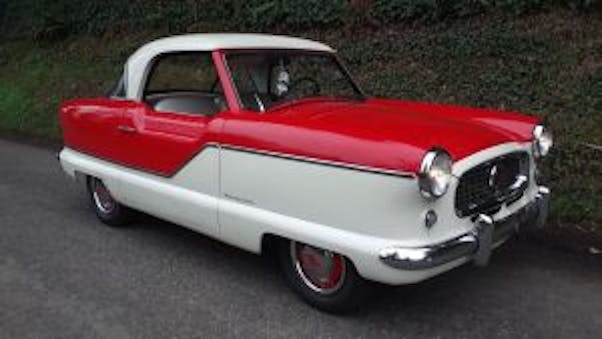
@Sunnyboy: My dad and I had to give up on our Nash Metropolitan. We had already successfully rebuilt the engine TWICE—once for pistons, then 200 miles later for a crankshaft—the cost of trying to save money by only doing “what’s necessary.”
But when we tried to fix this nasty clicking sound that happened in the front end on left turns, we discovered it was a large (2–3 inch) crack in the unibody where the upper A-frame was mounted. We could not weld, and no welder we knew (and we knew some really good ones in the O&G industry) would touch it. Plus we knew the weld would not pass safety inspection.
So we sold the car “as is.” This was long ago in the early 1970s when welding tech was somewhat more primitive, at least where we lived.
@DUB6: I welded a broken crankshaft from a Ford 8N tractor once, on the advice of a “tractor guy” and based on the assumption that rpm never got over 1500—therefore, little stress. I clamped, braced, measured, and remeasured about a hundred times for straightness, even welding three rods along and around the counterweights, then stick-welded and air-cooled in small increments, and really thought it would hold. Which it did, for about 2 weeks of mowing and light blade work, at which time the engine had to really torque down for a stump pull, and SNAP, clatter, clatter, thunk. The replacement (engine, not just crank, as the internal damage was pretty extensive) is still running fine, some 15 years later. Turns out it wasn’t rpm I should have been considering; it was workload.
@TG: I don’t know that I would try it on a crank, but my gas-less flux core wire welder does a remarkable job on cast for reasons I cannot explain
Timing belt

@TG: The timing belt on a 944 Porsche, but I did successfully complete the repair. I pulled the engine for other reasons that I don’t recall (I believe it was leaking balance-shaft housings), and the timing belt replacement on the mileage-unknown engine (estimated north of 200K) was a collateral repair. There is a timing-belt tensioning tool for the 944, but the repair cost was already pushing too close to the value of the car and I elected not to get a tool I would likely only use once. I tightened the timing belt using the sage wisdom of the internet (tighten until you can barely turn the long run of the belt 90 degrees).
I reassembled the car and had a fairly loud howl coming from the timing belt area. I backed off of the tension a little and the howl went away. I left the top of the cover off for inspection and eventually forgot about it. Now about two years later, the belt failed catastrophically and bent my valves into a literal S shape. I replaced the head, but damage had apparently been done in the lower end, and that is when I threw in the towel on the 944. Something I think about frequently as my replacement 1 Series approaches due for a timing belt. Wing it and ride with the original belt? Take it to the dealer and pay close to half the value of the car to get it replaced … ?
Rust
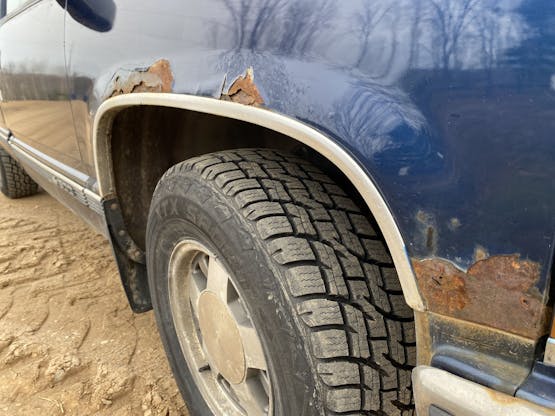
@Dean: Rust. No matter how hard I try to fix it, it always returns. Neil Young was right: it never sleeps.
A Northstar buffet
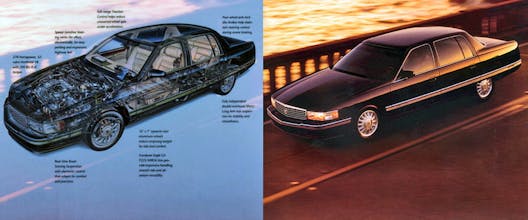
@ap41563: An oil-pressure sensor for a 2003 Cadillac DeVille with the Northstar. The sensor had about half an inch of clearance between the end of the sensor and the subframe, oil-filter housing bracket, and the exhaust manifold; there was a bunch of stuff for me to curse at while I was trying to get it.
I got it out finally after a couple of hours and then when trying to screw the new one in, the wiring harness for the plug snapped in half. My dad, who was nearby heard me drop the wrench and said, “Troubles?” I said, “Nope, not anymore. I’m calling a tow truck I am done.”
Being of sage wisdom, he said, “Now it can’t be that bad,” and crawled under there with me, looked up at it, and said, “I think this engine was designed by Satan. Call the tow truck and pay them whatever they want.”
Best $500 I spent.
@Billy: So speaking about the “dreaded NORTHSTAR engine,” the starter started to make a grinding sound, [and I] crawled under the car: no starter! Well, I found out that the starter was under the intake manifold so I had to remove everything up top. Next I found out that the starter killed the flywheel [teeth] so the trans had to come away from the engine. It has been almost a year of five more simple things on this barge and now the blower for the heat/AC went out. I have to remove coil packs, wire harness, etc. everything between the engine and firewall, tilt the engine three inches forward … hey, do you know anyone who wants a 2001 DeVille with 77K miles?!?
@ap41563: (again) I feel your pain! I inherited a 2003 DeVille with 96K and kept it till 170K. In my time with it, I did regular maintenance and several repairs. Including:
- Oil level sensor
- Oil pressure Switch
- Coolant Reservoir tank
- Water pump
- Intake manifold gaskets
- Coolant crossover gaskets
- Fuel vent tubs
- All actuators for the HVAC system
- Blower motor (that was easy, less than 10 minutes): you can get to it from under the dash on the passenger side.
Things I didn’t fix:
- Transmission’s overdrive solenoid
- The head bolts began to stretch (nobody was willing to take on the job around my area)
- Oil leaks from every single gasket on the engine
I loved the car, and I’m not upset about the work I did to keep it as my daily driver for seven years, as all that was cheaper than a car payment. I got to the point, though, that the whole driveline really needed to be replaced, and I couldn’t find anyone willing to do the work. If I tried to do it myself, I was worried I’d have to haul it to the junkyard, which would break my heart. I replaced it with a Buick with the 3800 V-6. Repairs I’ve done to it in the past three years: NOTHING! When the time comes, I know on the Buick, I can work through any needs it has and remind myself at least I’m not working in the DeVille Engine bay.
@audiobycarmine: I’ve got a 2002 DeVille with the NorthStar. I don’t think I’ll be sleeping very well anymore.
Hatching a plan
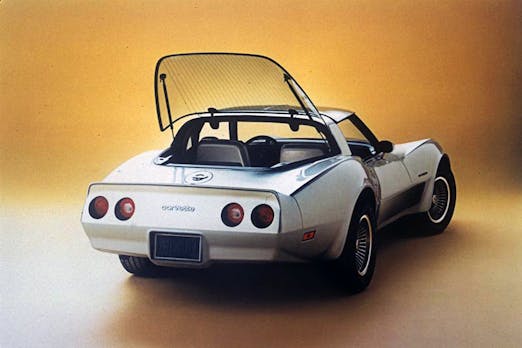
@Brushmore: It took me years to fix the hatch on my ’82 Corvette Collector Edition so it doesn’t leak. After many attempts I may have done it but I am afraid to call it a victory just yet. I am always nervous when I wash it, but the true test will be if I ever get caught in a surprise heavy rainstorm. The problem is that there is only one source for the weatherstripping and it’s up to the OEM specs.
Pushed out by pushrods
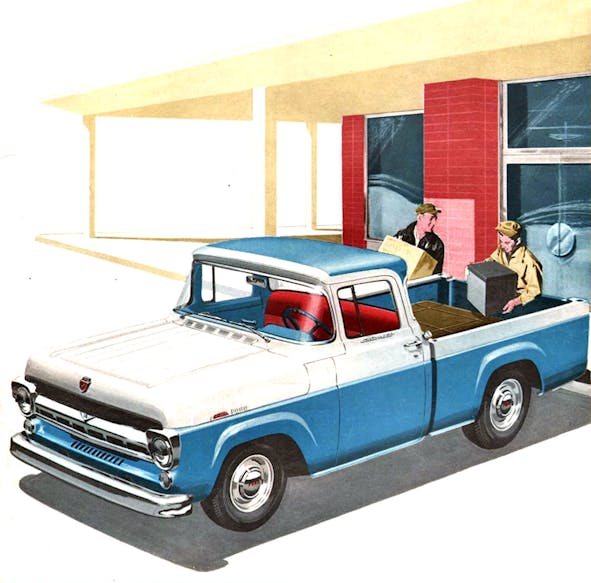
@Mark: Oh, I have one for the conversation. I purchased a good-running 1957 F100 short wide a year ago. 272 Y-block, factory auto transmission. I drove it 250 miles home with no problems! Put another 100 miles around town and one day it had an issue starting. Well, I fired it up, drove home, and parked it. Next day, no fire. So, into the garage, and I start chasing ghosts. Starter, new solenoid, I yanked the points and installed Pertronix ignition and coil, changed carb, fuel lines, battery cables, cleaned the tank and sending unit. Nothing. I pulled the valve covers to discover three bent pushrods. So, a year later, still no fire. Hopefully I will solve this.
Getting ungrounded?
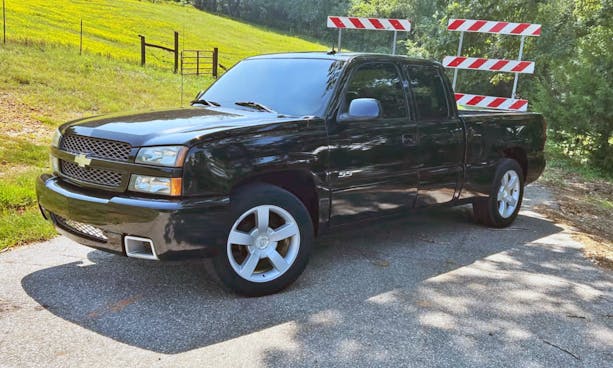
@jim: I’ve got a 2004 Silverado SS that’s been in the garage for two years. It goes into low-power mode, so you clear the code so you can get it home. I replaced the gas-pedal sensor (the box on the firewall) and the sensor on the throttle body twice. Ran grounds to everything, checked all the wiring. I work on it ’till I’m frustrated, then try to drive it somewhere close to home. It works for a couple of trips then screws up again. [The truck] is sentimental because my wife bought it for me new for my birthday, made the payments on her waitress money ’till it was paid off. Still nice to look at. The red rocket! Anyone got any ideas?
@SG: Double-check the ground wire that is on one of the bell-housing bolts. You can access this wire through the passenger-side wheel well with the inner liner removed.
Hidden water pumps
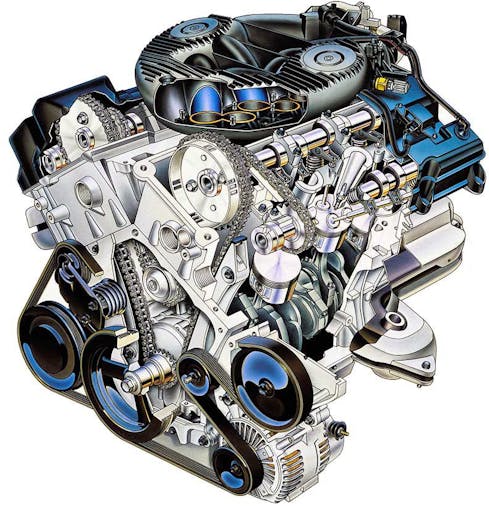
@Ryan: Chrysler 2.7 V-6 water pump replacement. I actually didn’t have a problem changing the water pump itself—it was removing and installing the timing chain. Apparently there are tools to lock the cams in place, but neither online video I watched made any mention of this. The plastic chain guides seemed to disintegrate while installing a new chain, and even though all timing marks appeared to [be] correct, I could not rotate the crankshaft a full revolution by hand, and I didn’t dare attempt to crank it with the starter because I was afraid of bending valves. Car got towed to a shop that knew what to do, and it was OK after that.
I got beat by that engine, but I have since learned from my mistakes, and my daily driver is now a Chrysler Sebring with a 2.7—it’s a great engine that really only has a bad reputation because people don’t understand it.
Buried by time?
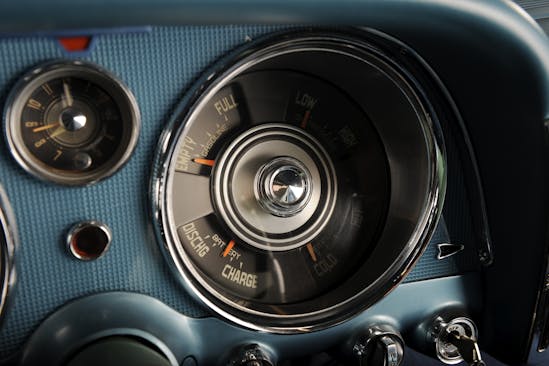
@Mark: Replacing the clock on my 1958 Imperial. When this car was assembled, the first thing down the line was said clock, and the car was assembled around it. You know you are in trouble when some enthusiast in France has put together a three-page website of tricks to get this done!
This is a cramped and complex panel, and the parking-brake release assembly has to be removed for access. Trouble is the release control shaft extends through the instrument panel (IP), and there is only one, narrow odd position angle where the assembly will clear the IP, the firewall/ floorboard, and steering column. That one component took a full day of trying to remove. Add in much blood offerings due to sharp raw edges inside the IP, and you have the job from hell.
I did get it done, however. I am stubborn.
Starting something … or not
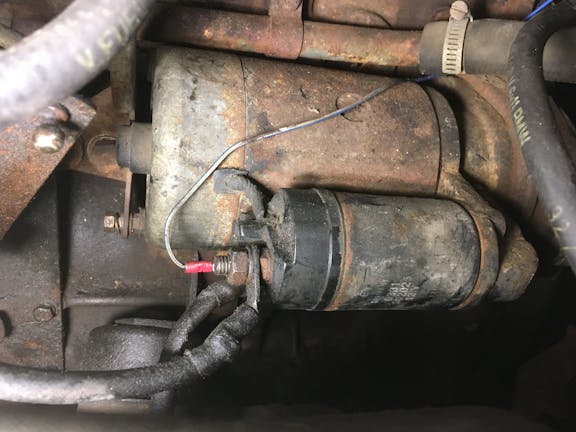
@Gil: My ’73 Lincoln starts erratically. I need to turn the key to start several times before it cranks. Not so bad, but when the engine is hot and I shut it off, when I try to start it again all I get is dead silence. What wire or connection, when hot, separates to cause this? I’m frustrated by driving the car to an event and waiting ’till it cools down before it may or may not restart to get me home. Anybody have recommendations? I thought it was the ignition switch, but it is on the steering column and should not be affected by engine heat.
@DUB6: I had a similar issue on my ’66 Pontiac. I suspected the old, rebuilt OEM starter was giving up due to age and constant heatsoaks. I decided to replace it with a mini-starter. When I was re-routing the battery cable/solenoid wire to the mini, I discovered that the ignition wire had a “cooked” spot in the insulation (it had been bundled with the battery cable and wrapped with silver heat tape, but the proximity to a header tube obviously overcame the protection). When stripped back, this revealed only two of the multiple strands of wire [were] connected. The ends of the others were in close proximity, and sometimes made enough contact to let the voltage/amperage through—sometimes not (likely due to heat deforming the insulation a bit which changed with cooling, or maybe me just not holding my mouth right). I replaced the wire and re-routed [it] to better clear the header and voilà! Issue solved. I now think I could have left the OEM started on, but I love the mini, so the old one is on the shelf as an emergency spare.
@TG: Ford solenoids are easy enough to check with a flathead screwdriver. Leaky valve covers put an early end to more starters than most folks realize. A lot of parts stores will not honor a warranty on a starter if there is any trace of oil on it.
Red mist from the red-block?
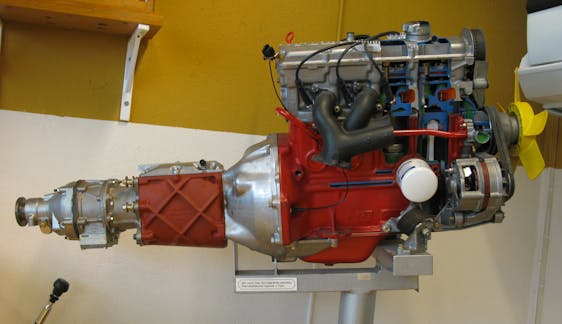
@Forty2: Volvo 240 red block crank-position sensor thoughtfully mounted on top of the bell-housing. I thought mine had gone bad. Ordered a new one. Not cheap!
- Buy multiple 1/4-inch-drive u-joints and extensions. 3/8-inch are too fat. You have maybe 3/8-inch of clearance between the back of the head and the firewall.
- Spend half a day figuring out the best mix ‘n’ match of above to reach the single 8mm bolt holding the sensor in place.
- Remove bolt. Aha!
- Be unable to pull the sensor out of the bellhousing because it’d become stuck after, oh, 30 years.
- Spend a few hours getting the little bolt back in.
- Give up on the bolt, because the sensor wasn’t the problem and it’s not going anywhere anyway.
Woulda been easier to remove the transmission!
Red mist from the Fireball?
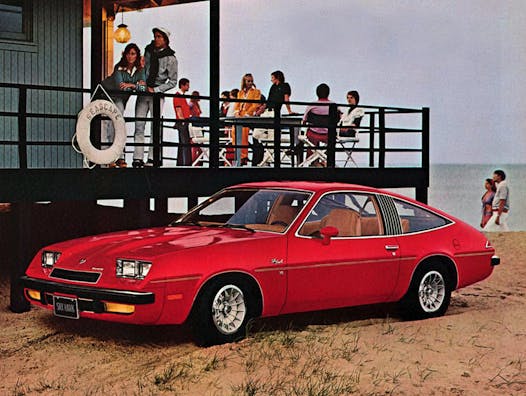
@Malcolm: Many decades ago, I had a 1975 Buick Skyhawk with a 3.8-liter V-6 engine. For all of 11.5 months, the car’s transmission would jump out of first gear, especially if I was trying to cross a busy street. The car went back to the dealer to be fixed. It continued to jump out of first gear. The clutch was replaced; the transmission was replaced. It still jumped out of first gear, then it jumped out of second gear, then third gear. Long story short, after four new clutches and five new transmissions, the transmission still jumped out of gear. My patience was wearing out, so I decided to trade it in for a Plymouth Duster. I was fed up with GM.
As I was in the car wash getting [the Skyhawk] primped up to deal, I looked down at the transmission boot and pushed it all the way down the shift stick. As I drove out of the car wash and onto the highway shifting from first to second and so on, I drove for about 10 miles for one last drive, the darn thing never jumped out of gear! And it never did for the 10 years I owned it. The rubber transmission-boot material was too stiff and after a while the seams on the boot ripped and was “perfect” for the duration I owned the Skyhawk! I never went back to the dealership as I was embarrassed with the situation.
The relentless pursuit of electrical gremlins
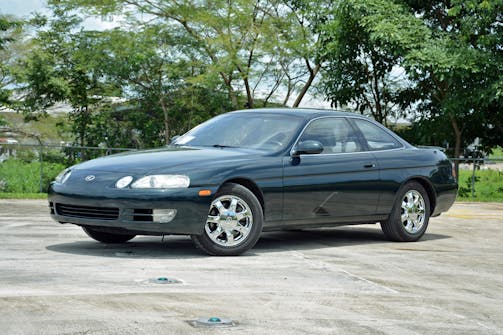
@audiobycarmine: For me it was whatever accursed computer/sensor problem that killed my Lexus SC400. I chased down every error code, replacing part after part, while amassing a formidable library of information throughout. Finally, in desperation, I had it towed to my mechanic, who had sophisticated diagnostic equipment. Said equipment turned out to be “agnostic,” as nothing faulty could be detected. The Lexus went off to NPR as a donation. The whole ordeal still bugs me.
Evaporating will for the EVAP

@Justin: I have two currently, and both are fuel tank vapor recovery EVAP issues that are triggering a check engine light. One is on a ’16 Silverado and the other on a ’02 Jeep Liberty. Also I’ve a ’87 Chrysler Conquest that simply will not run right: replaced the injectors, TPS, pressure regulator, and plenty of other parts. But it still idles rough, but occasionally runs great for a day or two. Then it goes back to spitting and sputtering, so if we can’t get it figured out it’s gonna get a Toyota V-8 from a SC or LS 400.
But the real one that’s killing me is a Genie 34/19 towable boom lift. Apparently it has some issue with the computer board, and replacements are simply not available.
***
Check out the Hagerty Media homepage so you don’t miss a single story, or better yet, bookmark it. To get our best stories delivered right to your inbox, subscribe to our newsletters.
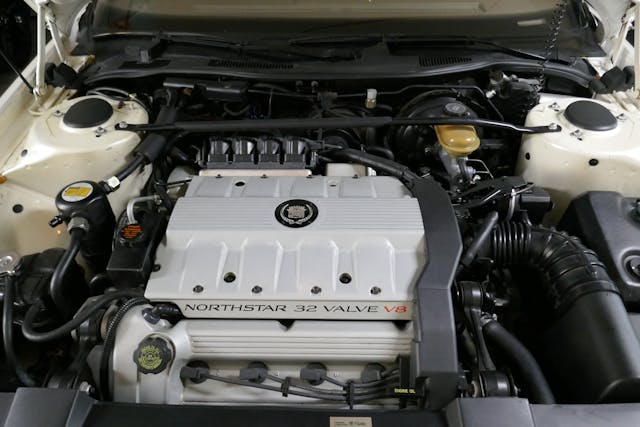


My wife’s C5 Corvette oil pressure sensor back of engine under cowl overhang can barely see or touch. GM says pull intake to replace, a YouTuber says drill hole in cowl above sensor just big enough for socket. Worked great.
Regarding the 1973 Lincoln.
Put in a new ignition switch. The actual switch is on top of the steering column down near the firewall.The lock cylinder is on the column.My brother has a 1977 T-Bird that would intermittently die.Changed carb,fuel pump, distributor, ignition box,added electric fuel pump, still did it.Putting in new ignition switch solved the problem.
The ’04-’06 Holden made Pontiac GTOs have a spring loaded contact ring around the steering column ignition switch. It’s made to communicate with the key fob; yeah, you gotta put a key in to drive these.
If the spring behind the ring fails, the anti theft immobilizer kicks in and you’re going nowhere. These assemblies are getting scarce (don’t ask me how I know this) so do as I and buy several. The car WILL NOT RUN if the main ECU can’t communicate with the key fob. Period.
Toyota V8s have the starter under the intake also. Mine went out and I couldn’t find it. Had to check the Internet! Wasn’t really that hard, EXCEPT for one bolt that goes in from the back… between block and firewall. Thought I might have to take the trans crossmember loose and lower the rear of the engine, but then I’d have had to use long extensions… I managed to “feel it in”.
The bent pushrod issue is caused by stuck valves. Stuck valves in an old engine that sat a while is caused by old fuel residue. Modern ethanol fuel will dissolve this residue (left in tank after old fuel mostly evaporates). a varnish like substance is created as it burns. The vapors get in the valve guides. While running it’s fine, but it gets sticky/congeals when it cools, which sticks the valves. The valves can be freed by spraying with penetrating oil and whacking with a mallet, but they will stick again unless the fuel system is thoroughly cleaned. In some cases that doesn’t do the trick — the valves have to come out and the shafts of the valve and the guide has to be thoroughly cleaned.
Timing chains and belts on OHC engines just depends on the make and how they are tensioned. Most of my experience has been on Toyotas (first was a 20R). They typically use an oil pressure tensioner which is fairly easy to work around when changing belts/chains. I typically align all the timing marks BEFORE removing the belt. Then if a cam slips when the old belt is removed (due to valve position — a valve spring causes cam to turn a little) it’s fairly easy to spot and correct. I’ve never run into anything with a tensioner that required a special tool — sounds like a bad idea! Hopefully that’s something rather uncommon, unique to Porshe ? I’m an AMC guy, and a few of you may know that AMC used a Porsche/Audi OHC 2.0L for a couple years. Unfortunately most avoid those cars even today! I’ve only seen one restored example. It was the 924 engine though, not the 944. IIRC two totally different engine families.
https://www.curbsideclassic.com/uncategorized/vintage-r-t-review-1977-amc-gremlin-with-4-cyl-engine-a-porsche-engine-waiting-for-a-better-car/
The 2002 BMW e39 M5. I had a failed thermostat causing the engine to never heat up. Purcjased the part and found the housing right in the front of the V of the engine, not even hard to get too, just unbolted the big carbon intake plenum. The issue was the thermostat housing had 3 tubes out the back with an o-ring at each end. Those 6 o-rings were easy easy to slice in install. A week after the install I had gone through several gallons of coolant. Took it to the dealer and asked the master tech to fix it. He initially thought I was and idiot for not being able to do such a simple job. 2 weeks of pressure testing later and many sliced o-rings, he agreed with me that it was a miserable install to do and a terrible design.
I had a Sebring with that V6. The SLUDGE motor. Bad rep totally deserved. I was able to unload it white it still ran. This was the car that finally got me off American junk.
I had a 1972 Mercury Capri with the 2L OHC 4-banger. Ran like a top for over 100k, but eventually the front-most rocker arm pulled its stud out of the head. I bought a new head, and about 5k miles later, the same thing happened.
I still have my ‘06 Subaru Forester, although I don’t know why. Five or six years ago, the check engine light came on. Diagnostics said it was a small exhaust leak, but it wasn’t. Five thousand dollars and four mechanics later, it turned out to be a weak fuel pump. I REALLY don’t understand why a diagnostic would say something that misleading.
Welcome to my (Lexus SC400) world.
hi jim here the 04 SS pickup guy, I pulled the inner wheel well checked those wires, all were bolted in correctly. double checked for good grounds by probing said wires all wires had good grounds. I see two people said the trans module caused the problem. thought the ecm controlled the transmission. on goes the fun!
If you love it, sir, never give up. If it’s just an appliance thing (I live in Fargo, ND, and use a heavy half, barn door, lifted ex plow ’04 4×4 Tahoe for winter duty) patch and sell.
I bought the Tahoe from a friend who bought it from the original owner, his employer. It had a replacement LS series 6.2, rebuilt transmission, dealer new transfer case, and all new CV shafts. I have all the receipts.
It also had multiple holes in the roof from the light bar and antennae, the under dash was full of excess wiring for the plow and extra lights, and the entire front end was worn out to the point of being unsafe to drive.
I rebuilt the front suspension and had it professionally aligned, while lifting the ‘Ho 4 inches and installing 20″ AR rims and most exceptional Hankook light truck tires. The local radio shop that does cop vehicles, tow trucks, etc, removed all the old roof plugs and antenna stubs and sealed the roof. I kept the 7500# Reese load leveling hitch and aftermarket fog/driving/perimeter lights, replaced all exterior bulbs with Eurospec LEDS.
My interior is generic GM tan mouse fur. The console is from a junkyard, but works. The 210°F thermostat makes it toasty warm in the Fargo winter, it also has the rear heat/ac unit that most work/fleet trucks lack.
It does, however, have that mid-00s GM appliance white paint that chips off if one stares hard. I have pinholes in the hood, and if I don’t keep up, get rust streaks like a Liberian flagged tramp freighter. But I don’t care. The ‘Ho conquers winter like Genghis conquered Asia, warm, auto start, never stuck nor any fear of stuck. Pulls out much larger trucks at will, lil Asian sedans and pretend trucks? 2 wheel drive and the strap.
I’ma keep the ‘Ho until the body falls off.
And guys, the supposedly perfect German design is actually no better ……
I have owned 6 BMW’s over the years, and without fail every one of them had the water pump fail at 60 000 Miles, make it 7 my son’s M3 did the same ……
My first BMW was a 325i E36 – fabulous car (other than the failing water pump), but just before I sold it, the air-conditioned emulsion valve (the thing that turns fluid into gas as it enters the cabin heat exchanger) failed. Turns out it is deep under the dashboard (one of those first component in items). In order to repair it, the entire dash had to be removed to change it out. I sold it with the aircon not working and told the buyer it probably needed re-gassing …..
On my 325iS changing the starter requires some savvy understanding. Apparently the rather nice sports close ratio auto is made by Isuzu of all people, and the starter is bolted from inside of the bell housing into treads on the starter mounting flange – weird, and needs a lot of careful tool selection and a lot of time to change. The car eventually kept getting an engine warning light because the torque converter pressure valve had gone lazy, and changing it involved removing the trans, a job costing around $1500 – sold it when the next emission test requirement came up, as the emission guys wont pass it with an engine warning light alarm.
My daughters 320 bob tail had an overheating problem, and a very lackluster heater. Turned out that earlier models, which this was one of ,were prone to the problem due to badly routed heater pipes. There is kit for it but I ended up $1000 out of pocket rectifying it. Additionally, the Electric windows kept separating the glass from the lift slide – to the point where I know how to rectify it quickly each time.
My BMW 535 was an early model that had 2 control boxes of relays under the rear seat that went faulty causing some hilarious repercussions – open the sunroof and one, or both front windows would lower simultaneously, or turn on the heat and the air con would come on flat out and freeze you half to death in the middle of winter – rebuilt relay boxes cost me $500 !
God help me, but I recently purchased a very good condition 325iC for my wife …… I wonder what surprises it has in store ……
First, the turn signal relay of my 1972 Citroen DS21 gave out: the signals would light up, but not blink. Then the combined turn-signal/horn control stalk snapped off in my hand when a car abruptly pulled out in front of me in a parking lot and I went for the horn. I decided to tackle both repairs myself. It required just about my entire set of small metric hex key sockets to open up the steering column cladding. Inside the dash of the car was worse: a mass of unlabeled wires, modified by decades of backyard mechanics into an indecipherable tangle. I replaced the failed turn signal relay, but when I operated the new replacement turn signal stalk the interior cabin lights began to blink. I gave up. I got the car to my mechanic.
@Justin – I had a towable as well and the traces on the CPU board got cooked off. I bridge soldered them and it worked for a while but I ended up giving it away.
another update on the 04 SS. this article and shopping for a new truck got me off my butt and a little deep thinking figured out the prob. I had replaced all the parts involved in the system. the sensors and computer boxes ect. what I missed was the throttle body besides the sensors has a motor that runs or opens and closes the air intake. I guess at 242,000 miles it was worn out. so a guy with limited income social security, I just replaced the sensor part instead of the whole unit. so thanks for the article and the push I needed to get the red rocket cruising again ive put 120 miles on it with no problems so far.
Changed the power window regulator on my 89 Dodge D-150 a few weeks ago.
Pulling apart the door panel easy enough but very little access through sharp holes in sheet metal.
Had to drill door panel for access to motor mounts.
Spring assist to raise window truly dangerous, happy to survive.
Many refits if all elements to get the right sequence.
Finally done, now an expert in an unwanted skill.
But happy to have accomplished this project!